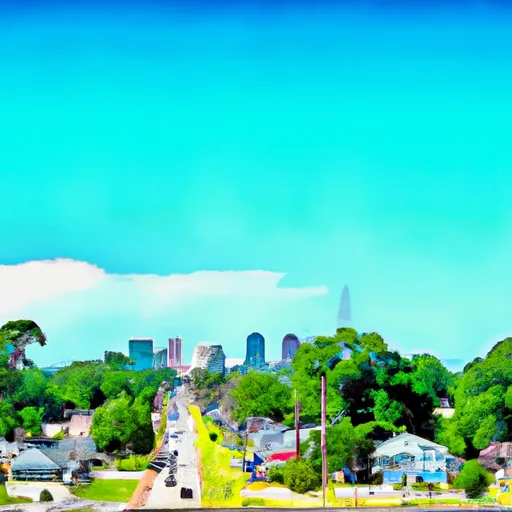-
 Snoflo Premium
Snoflo Premium
Get unlimited access to all our content
With no Ad interruptions! - Start Your Free Trial Login with existing account
Ramah
Eden Index
Climate
7.3
•
Recreation
2.4
•
Community
2.0
•
Safeguard
4.2/10

Ramah, Louisiana is a small town located in Pointe Coupee Parish. It experiences a humid subtropical climate with hot and humid summers and mild winters. Summers are characterized by high temperatures averaging around 90°F (32°C) and frequent thunderstorms, while winters see average temperatures of 50°F (10°C) with occasional cold snaps.
Hydrologically, Ramah is surrounded by the Atchafalaya River Basin, which influences the region's water resources and hydrology constituents. The nearby Atchafalaya River provides a vital source of water, supporting diverse ecosystems and offering opportunities for fishing, boating, and wildlife observation.
When it comes to outdoor recreation, Ramah boasts several options. The nearby False River Lake, formed by a dam on the Atchafalaya River, is a popular spot for boating, jet skiing, and fishing. The lake is home to a variety of fish species, including largemouth bass, crappie, and catfish. Additionally, the surrounding forests and wetlands offer opportunities for birdwatching, hiking, and hunting.
In conclusion, Ramah, Louisiana experiences a humid subtropical climate, is surrounded by the Atchafalaya River Basin, and offers outdoor recreation opportunities centered around the nearby False River Lake and surrounding natural areas.
What is the Eden Index?
The Snoflo Eden Index serves as a comprehensive rating system for regions, evaluating their desirability through a holistic assessment of climate health, outdoor recreation opportunities, and natural disaster risk, acknowledging the profound impact of these factors on livability and well-being.
Climate Health Indicator (CHI): 7.3
Ramah receives approximately
1538mm of rain per year,
with humidity levels near 83%
and air temperatures averaging around
20°C.
Ramah has a plant hardyness factor of
9, meaning
plants and agriculture in this region tend to thrive here all year round.
By considering the ideal temperature range, reliable water supplies, clean air, and stable seasonal rain or snowpacks, the Climate Health Indicator (CHI) underscores the significance of a healthy climate as the foundation for quality living.
A healthy climate is paramount for ensuring a high quality of life and livability in a region, fostering both physical well-being and environmental harmony. This can be characterized by ideal temperatures, reliable access to water supplies, clean air, and consistent seasonal rain or snowpacks.
Weather Forecast
Streamflow Conditions
Lower Grand
Area Rivers
Lower Grand
Snowpack Depths
Lower Grand
Reservoir Storage Capacity
Lower Grand
Groundwater Levels
Recreational Opportunity Index (ROI): 2.4
The Recreational Opportunity Index (ROI) recognizes the value of outdoor recreational options, such as parks, hiking trails, camping sites, and fishing spots, while acknowledging that climate plays a pivotal role in ensuring the comfort and consistency of these experiences.
Access to outdoor recreational opportunities, encompassing activities such as parks, hiking, camping, and fishing, is crucial for overall well-being, and the climate plays a pivotal role in enabling and enhancing these experiences, ensuring that individuals can engage in nature-based activities comfortably and consistently.
Camping Areas
| Campground | Campsites | Reservations | Toilets | Showers | Elevation |
|---|---|---|---|---|---|
| Greer Crossing | 72 | 564 ft | |||
| Poverty Point Reservoir State Park | 50 | 97 ft | |||
| Notrebes Bend | None | 160 ft | |||
| Pendleton Bend | None | 172 ft | |||
| Riverfront RV Park | None | 178 ft | |||
| Alley Spring - Ozark National Scenic River | 162 | 672 ft | |||
| Jerktail Landing | None | 657 ft | |||
| Oak Grove City Park | 30 | 117 ft | |||
| Wilbur D Mills | None | 188 ft | |||
| Lake Fausse Pointe State Park | None | 5 ft |
Nearby Ski Areas
Catastrophe Safeguard Index (CSI):
The Catastrophe Safeguard Index (CSI) recognizes that natural disaster risk, encompassing floods, fires, hurricanes, and tornadoes, can drastically affect safety and the overall appeal of an area.
The level of natural disaster risk in a region significantly affects safety and the overall livability, with climate change amplifying these risks by potentially increasing the frequency and intensity of events like floods, fires, hurricanes, and tornadoes, thereby posing substantial challenges to community resilience and well-being.
Community Resilience Indicator (CRI): 2.0
The Community Resilience Indicator (CRI) recognizes that education, healthcare, and socioeconomics are crucial to the well-being of a region. The CRI acknowledges the profound impact of these elements on residents' overall quality of life. By evaluating educational resources, healthcare accessibility, and economic inclusivity, the index captures the essential aspects that contribute to a thriving community, fostering resident satisfaction, equity, and social cohesion.

